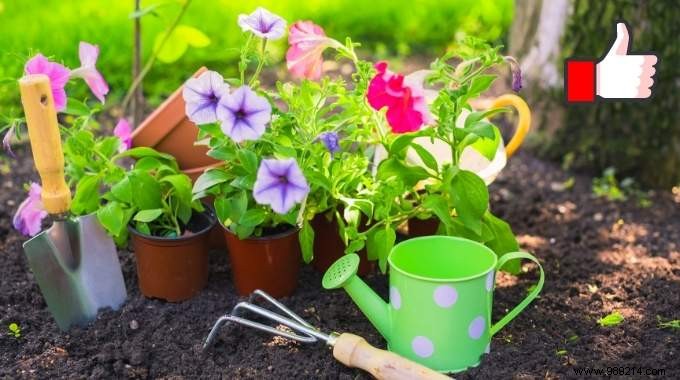
Want to garden?
You are ready to dig and get your hands in the dirt.
The only problem is that you don't know where to start!
What is needed are gardening tips to have beautiful flowers and get better harvests of fruits and vegetables!
Fortunately, we thought of you.
Here are the 25 Incredible Gardening Tricks Every Gardener Needs to Know . Watch:
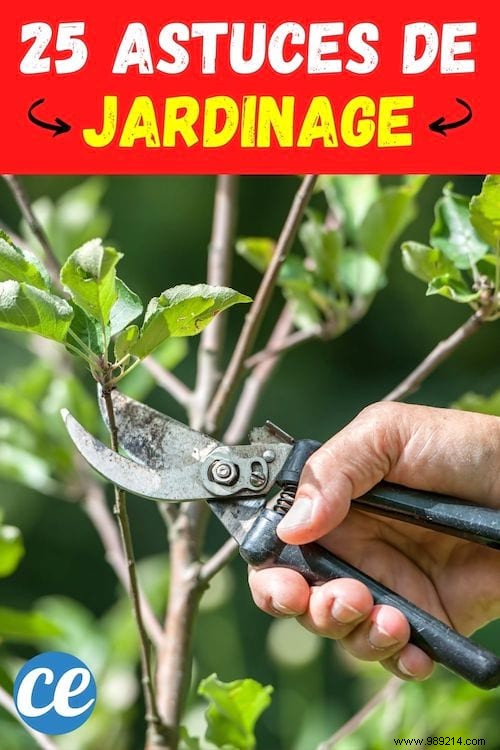
Want to get into gardening, but you're still at the beginner level?
So, I'm willing to bet it:you must have a thousand questions about gardening.
How to plant vegetables? And what kind of soil is the best?
When should hydrangeas be pruned? When to divide irises and hostas?
What is the ideal sunshine? And the best time to water your plants?
Before answering all these questions, there is a very important tip about gardening.
Something you must know.
Your best gardening teacher will always be Nature. And that should never be forgotten.
The more you garden, the more you'll learn about which methods work (and which don't!).
In the meantime, we have prepared this list for you with 25 basic gardening tips.
Here you will find the answers to the most common questions for beginner gardeners.
And don't forget, gardening is also about having fun and relaxing!
Ready to grow beautiful flowers and harvest magnificent fruits and vegetables in your garden? Watch:

Source:promisedefleurs.com
If you're new to gardening, there's one thing you absolutely need to know:your hardiness zone!
The cold hardiness of a plant is its limit of resistance to cold .
This data essentially indicates the degree of cold that your plants must undergo during the winter in your region.
It allows you to accurately determine which trees, shrubs and perennials cannot survive the cold and the heat in your area.
Thanks to the climate zone maps, also called USDA maps, you will know the date of the last spring frost in your geographical area.
This will therefore tell you the best dates for planting your fruits and vegetables and your annuals outdoors.
Click here to learn more about your hardiness zone.
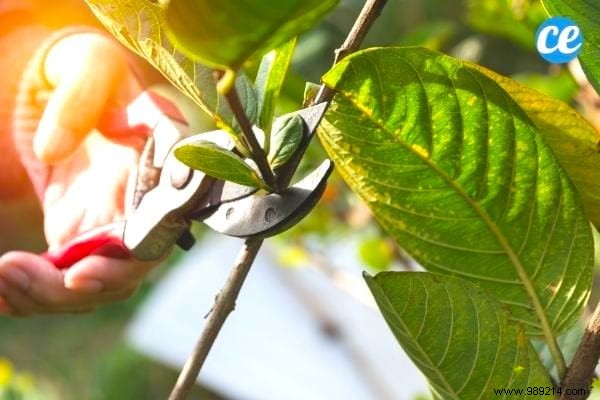
To grow their best and stay healthy, your trees, shrubs and even your perennials need to be pruned.
Prune lilacs, climbing roses and other spring-flowering shrubs just after they finish flowering .
Remember, buds are formed in autumn on the shoots of the previous year.
If you wait until fall or winter to prune your plants, you will be removing the buds that set flowers next spring.
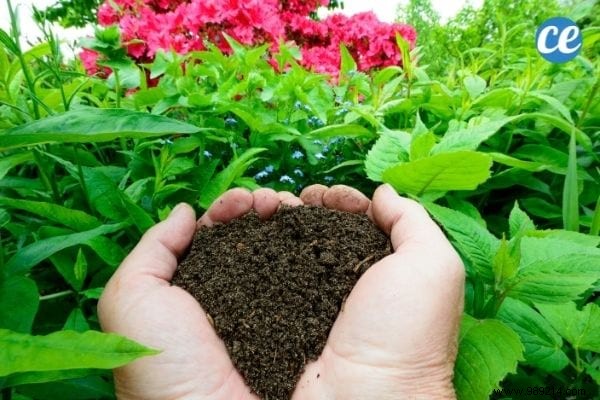
Fresh manure is so loaded with nitrogen that it can "burn" your plants.
In addition, fresh manure can also contain germs and disease-causing organisms.
Use only composted manure that has aged and dried for at least six months .
Click here to discover the easy guide to start your compost.
Be aware that pig, dog, and cat manure may contain parasites that are dangerous to humans.
Do not use them in your garden or compost.
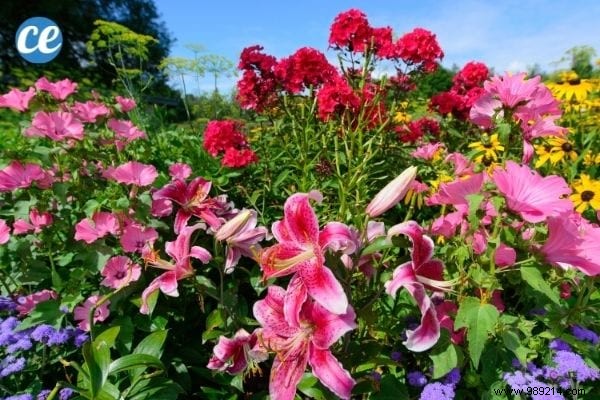
In the garden, perennials are valued for their longevity.
But be aware that you have to wait about 3 years for a perennial to reach its adult size.
So if you've just planted a perennial, don't be impatient!
Perennials are plants whose stump stays in the ground, even in winter.
Unlike annual plants, which are characterized by a cultivation and life cycle of only a few months.
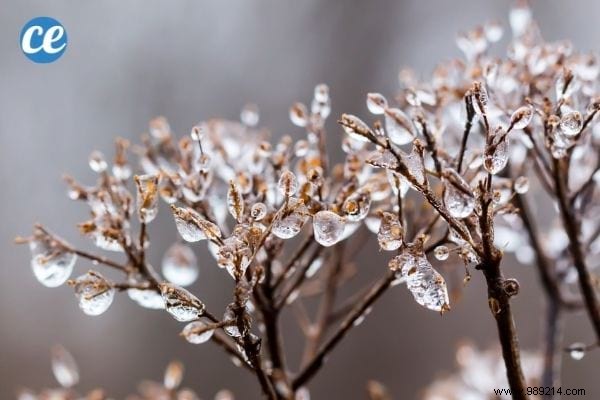
Find out about frosts in your area and memorize the following dates:
- the last frost in spring and
- the first frost in the fall .
Why is this so important?
Because it is only between these dates that you can grow your plants outdoors.
This helps determine which plants you should avoid planting if it is too late in the year.
But also the plants that are best germinated indoors when the date of the last frost approaches.
By the way, did you know that you can use eggshells as small seedling pots to germinate seeds?
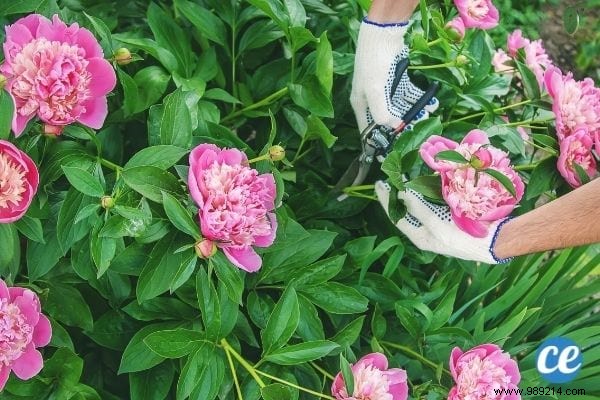
Gardeners recommend pruning faded flowers, whether they are perennials or annuals.
The natural cycle of annuals is to flower, set seed and die.
Wilted flowers divert plant nutrients.
By removing spent flowers from your annuals, they will naturally grow more flowers.
And that's not all…
Your plants will naturally grow more leaves and develop roots.
On the other hand, avoid removing faded flowers from plants grown for their fruit or decorative pods.
This is particularly the case of the lunar, also called "pope's currency" or "cushion grass", which is grown to dry its fruits.
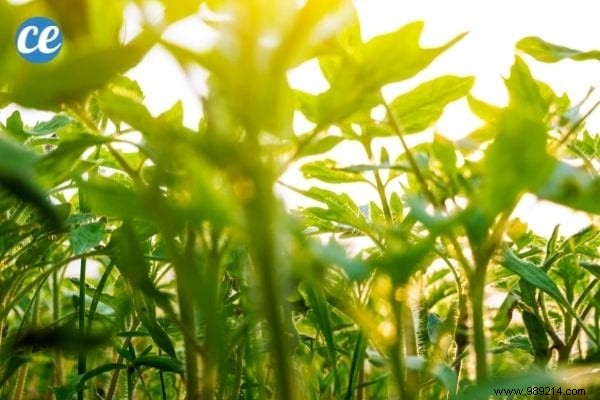
Remember to find out about the ideal sun exposure for all the plants in your garden.
For example, vegetables should receive at least 8 hours of direct sunlight every day.
Indeed, to obtain better harvests, most vegetables need a lot of sun.
If you don't have the best sun conditions, opt for leafy greens, such as kale, spinach, or lettuce.
To discover: 100 Vegetable Garden Tips To Grow Your Vegetables EASILY.
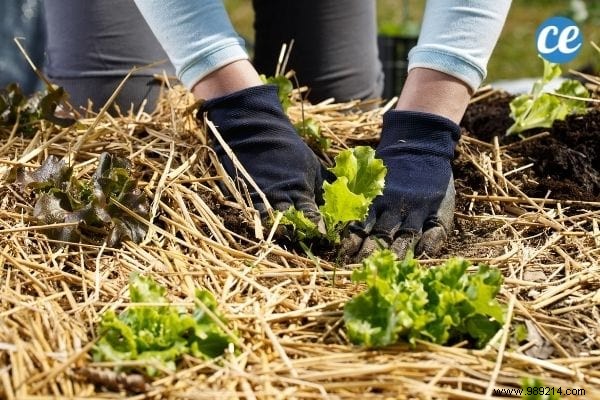
The best way to fight weeds in the garden?
It's the old-fashioned way:by weeding regularly around your plants and hoeing the soil .
On the other hand, avoid working the soil deeply, at the risk of ending up with even more weeds!
Indeed, if you work the soil deeply, it will bring the seeds of weeds to the surface.
Instead, weed your soil as early and as often as possible, to prevent weeds from going to seed.
And the secret to preventing weeds from growing?
It's to smother them by spreading mulch around your plants.
Click here to find out how to mulch the soil in your garden.
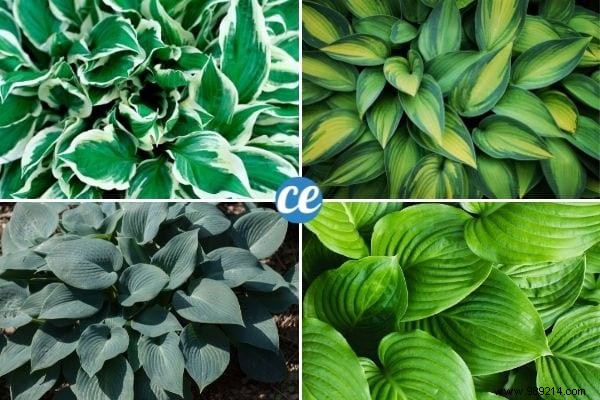
Be aware that in reality it is not necessary to divide the hostas.
But splitting the hosta stump into pieces can sometimes be useful, especially for:
- rejuvenate an old plant,
- increase the number of plants,
- have less extensive tufts.
The best times to divide your hostas are in the spring or in autumn .
In the spring, we see the future shoots of the hostas appear, before their leaves unroll.
You can also divide them in the fall, at least 4 weeks before the ground freezes completely.
If you don't know the technique for dividing, a simple blow of the spade is enough to cut the stump into several pieces.
Afterwards, all you have to do is replant the shards in the chosen locations.
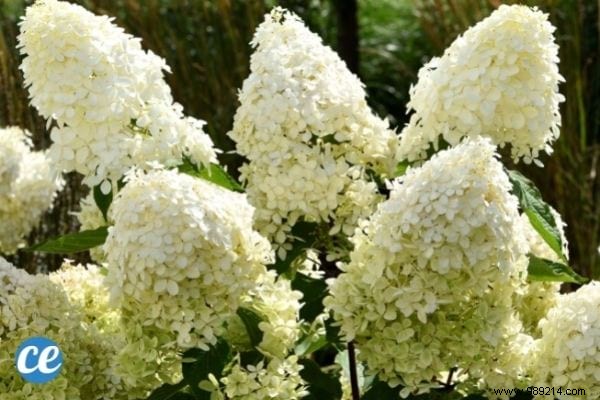
Few people know that some varieties of hydrangeas do not grow in the shade.
Paniculated hydrangeas (Hydrangea paniculata ) need direct sun exposure for best flowering.
In addition, there are several varieties of panicle hydrangeas, including:
- Hydrangea paniculata 'Limelight'
- Hydrangea paniculata 'Vanilla Strawberry'
- Hydrangea paniculata 'Bombshell'
What if I told you that you can vary the color of your hydrangeas by modifying the pH of the soil?
The trick is to use white vinegar and baking soda to change the pH of the soil. Click here to find out how.
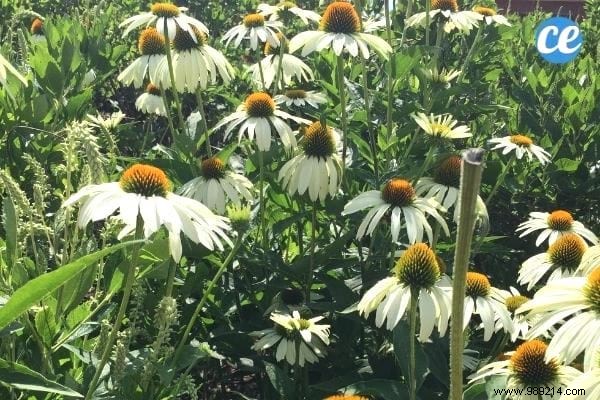
In the fall, most of the plants in the garden are about to go into vegetative rest.
Therefore, this is the perfect season to do a light cleaning pruning.
But beware:some plants do not need to be cleaned .
For example, you can keep ornamental grasses for their aesthetic appearance.
Similarly, no need to prune the seed heads of perennials like Echinacea, as they can feed the birds.
Also avoid pruning hardy perennials, such as chrysanthemums, to increase their chances of surviving harsh winters.
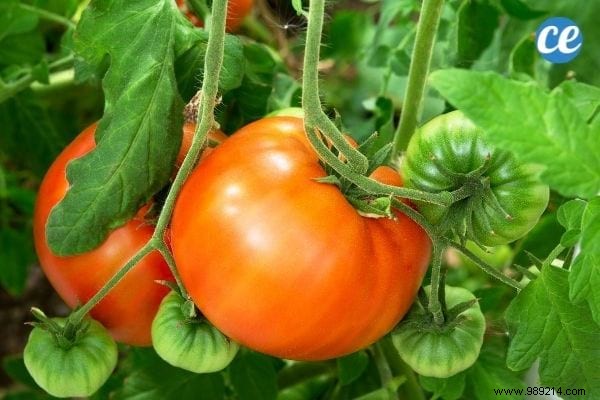
A good tip for growing your tomatoes is to watch the thermometer.
The perfect temperature to obtain beautiful ripe tomatoes? Between 20 and 25°C .
When the temperature exceeds 30°C, tomato plants no longer produce lycopene and carotene.
These two substances are responsible for the pigment that gives tomatoes their red color.
And if the temperature drops below 10°C for a long time, the green tomatoes can no longer ripen.
If so, only tomatoes that have changed color slightly can continue to ripen, placing them indoors.
To discover: 13 Tricks To Grow More, Bigger, Tastier Tomatoes.
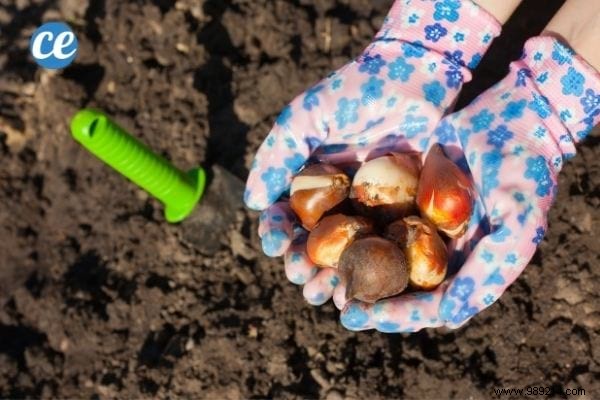
Spring flowering bulbs include the following flowers:tulips, fritillaries, narcissi, hyacinths, crocuses, anemones, snowdrops and ornamental garlic.
And the best time to plant their bulbs is in the fall, before the ground freezes .
Gardener's advice:the bulb is planted with the tip upwards and the root plate downwards.
And pay attention to the planting depth! Indeed, the bulb must be buried twice the height of the bulb.
The larger the diameter of the bulb, the deeper the bulb is buried.
Spring-flowering bulbs are planted in the fall to bloom the following spring.
They can therefore spend the winter underground:they are hardy bulbs .
Generally, hardy bulbs only require one planting, and bloom year after year.
Only one exception:hybrid tulips, which are more fragile.
Better to dig them up when the leaves are completely yellow, droopy and dried out.
You can replant new bulbs in the fall or choose a more perennial variety of tulips.
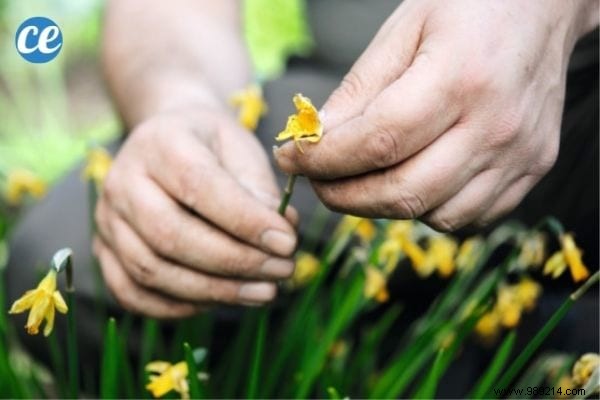
When daffodils, hyacinths and other spring-flowering plants run out of seed, they don't have the energy to produce more flowers.
To make them bloom again, simply remove the faded flowers .
It allows the plants to transfer their energy to the bulbs, and not to the bolting.
On the other hand, do not remove the foliage right away.
The leaves store the nutrients necessary for the bulb to bloom the following spring.
Better to wait until the foliage turns brown before removing it, with a light dry blow.
Some people think that you have to tie or braid the leaves of bulbs to get a nice bloom the following spring.
It's a myth! Leave the leaves alone .
If you tie or braid the leaves, you reduce the surface exposed to the sun.
And that will just impoverish the bulb and lead to reduced flowering the following year.
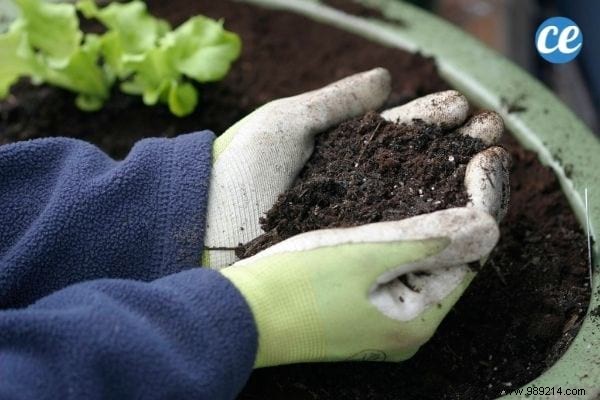
For many people, fertilizer is the best solution to grow better plants.
In reality, the fertilizer is only intended to feed the plants directly .
But the lasting solution is to make your land alive and fertile.
To improve the quality of your soil in a sustainable way, you must add organic amendments.
Organic amendments that can be used in the garden include:
- compost
- composted and aged manure
The purpose of the amendments is to improve the soil , both in terms of its texture and its structure.
Thanks to the amendments, your soil will become easier to work with and will retain water better.
Its texture will be lighter, allowing the roots of your plants to breathe better.
If you choose to use a fertilizer, be sure to use a compound organic fertilizer that is high in nitrogen, phosphate, and potash.
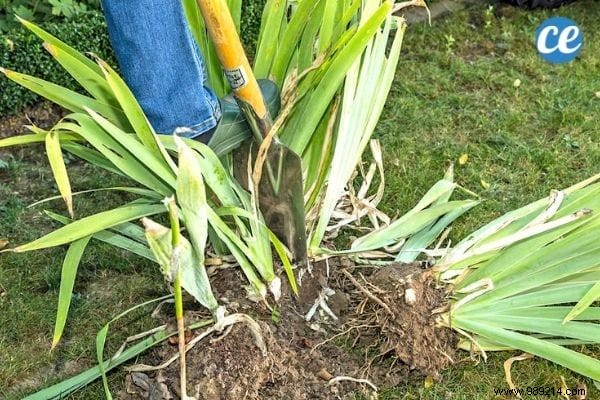
Have you planted irises, peonies, hostas, daylilies or other spring-flowering perennials?
After several years of planting, the flowering of perennials tends to become less abundant.
This is because as they grow, their roots end up getting in the way.
This is a sign that your plants need to be divided .
The best time to divide and transplant spring-blooming perennials?
It's late summer or early fall.
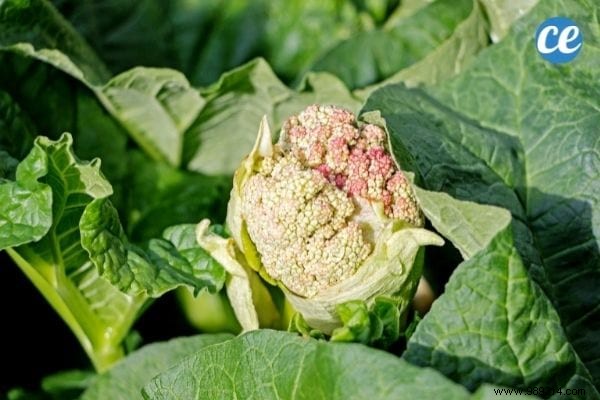
Has your rhubarb bloomed? Delete the flower stalk and its stem , as soon as they appear.
Flowers can divert nutrients from the plant to these new "stems".
In addition to the forming flowers, it is also advisable to remove the older leaves, located around the perimeter of the plant.
This will promote the development of new leaves, and you will obtain more tender and voluminous petioles.
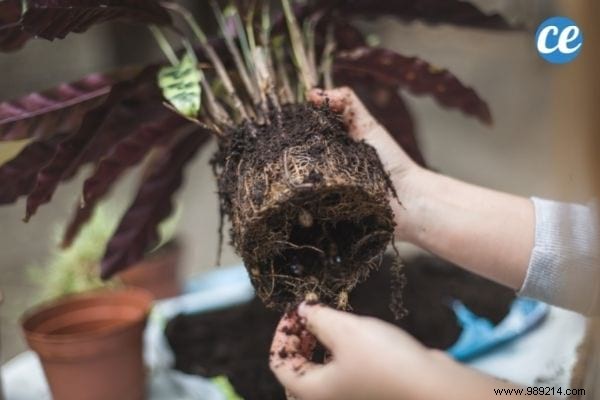
Do you want to transplant a perennial in a pot?
Here is the correct method:
- Dig a hole that is twice the diameter of the pot and 1.5 times the height of the pot.
- Fill the bottom of the hole with moistened potting soil suitable for the plant, ensuring that the level of soil in the pot is equal to that of the ground .
- Install the plant in the hole.
- Fill in the rest of the hole, using the same dirt you dug.
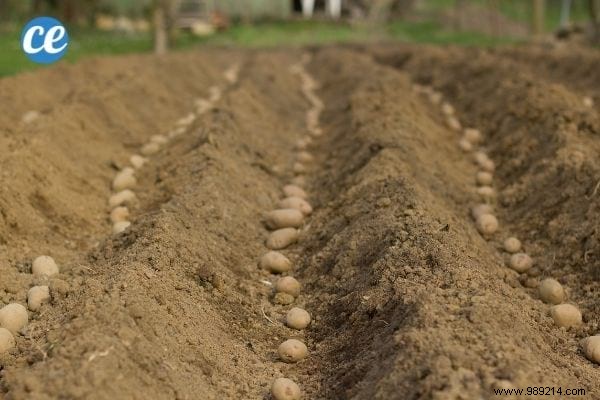
If you're growing potatoes, there are two key things to remember:
- plant the seed potatoes well at the bottom of the furrows and cover them with about 15 cm of well loosened soil.
- once harvested, the potatoes can be stored in the dark, in a cool, ventilated place.
If exposed to light, the skin of potatoes turns green.
This means that these potatoes produced solanine, a colorless and bitter-tasting alkaloid.
Solanine is a toxin which, when consumed in large quantities, can cause disease.
This is why it is advisable to remove all green areas, as well as germs and eyes before cooking the potatoes.
There's an old grandma's trick to keep potatoes from sprouting.
Just place an apple in the middle of your potatoes. Click here to find out how.
To discover: 4 Simple Steps To Grow 45 kg Potatoes in a Barrel!
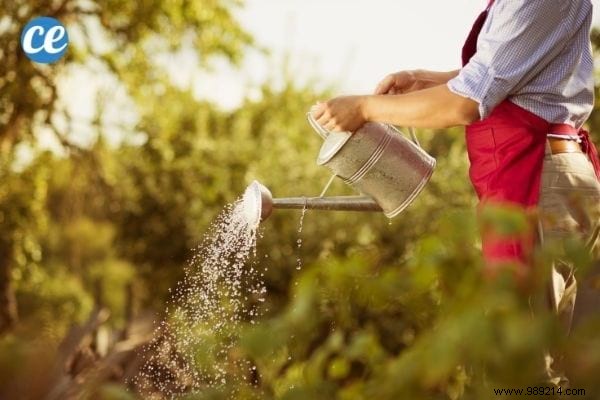
Generally, plants in the ground grow best if you water them with 3 to 5 cm of water per week .
If it does not rain enough, it is better to water your plants copiously once a week rather than every day a little bit.
Indeed, frequent and shallow watering only moistens the upper layer of the soil.
This will encourage plant roots to settle near the surface of the soil, instead of growing deeper.
And when is the best time to water? It depends on the season.
In autumn and spring , water in the morning, as this allows water to infiltrate during the day, instead of stagnating overnight.
In summer , water late in the evening, so that the water does not evaporate and penetrates the soil well during the night.
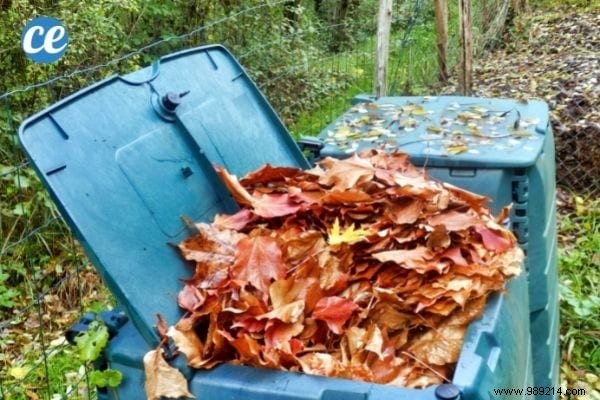
In autumn, do not throw away the dead leaves!
After picking them up, you can mulch them with your lawn mower and add them to your compost.
You can also leave the shredded leaves on your garden lawn. As they decompose, they will feed the lawn.
Dead leaves also make excellent plant mulch, especially after severe frost episodes, once your plants are dormant.
Spread a good layer of 10 to 15 cm of shredded leaves on the ground around your tender perennials during the winter.
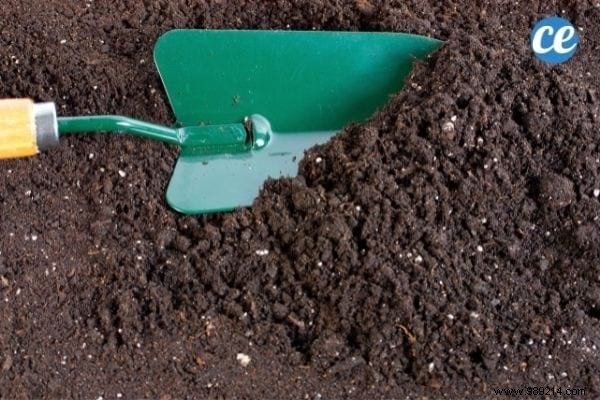
Cultivating wet soil can damage the structure of the soil.
Before plowing, turning, digging or loosening the soil in your garden, wait until the soil is well friable, soft and easy to work .
Exactly as in the photo above, no need to wait for the soil to dry out completely.
A good test to know if the soil is too wet:take a handful and squeeze it between your hands.
If the soil is too wet and sticky, it will form a ball.
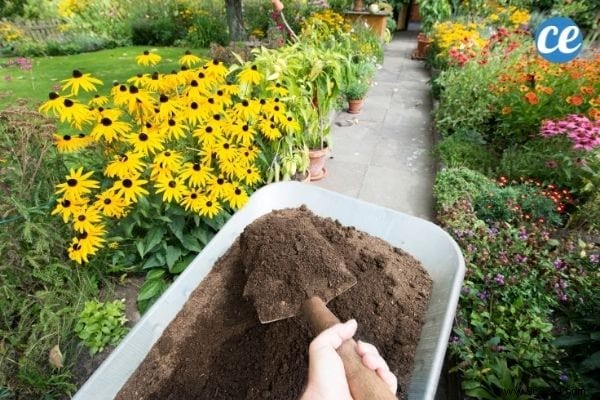
If a soil is too compact and clayey, plant roots stay too long in wet conditions.
However, the roots of your plants need air pockets to be able to breathe and develop.
It is for this reason that you will often find the term "moist and well-drained " to describe a garden soil.
It is also the ideal type of soil for the growth of the vast majority of plants.
To improve the quality of a soil, all you need to do is add organic matter:compost, shredded leaves, manure, etc.
To improve the water retention of sandy soil or the drainage of clay soil, it is often easier to cover them with a good layer of quality soil.
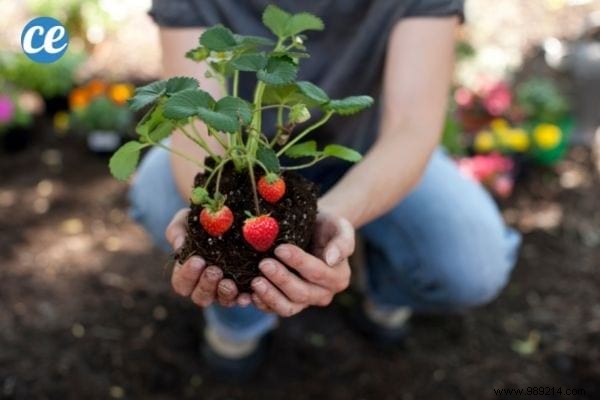
To flower, some plants need long nights .
This is particularly the case with chrysanthemums, poinsettias and strawberries, which are called "short-day" plants.
But what does it matter, would you say?
Choose so-called "day-neutral" strawberry varieties because they flower all summer and even in the fall.
And these varieties therefore also produce fruit for most of the season.
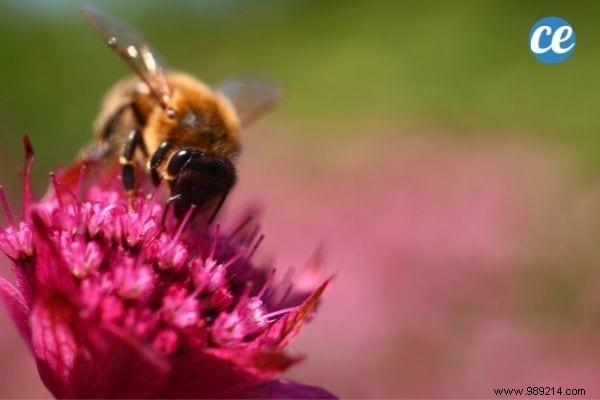
Native plants are often better suited for cultivation , climate and ecosystem in your area than plants from other places in the world.
They are also more attractive to bees and other pollinators in your area, which have evolved with native plants.
Do you want to plant attractive plants for bees and other pollinators?
So be careful to always choose varieties with single flowers .
Indeed, varieties of plants with double flowers are of no interest to pollinators.
Their flowers are so complex that the bees no longer have access to the food source.